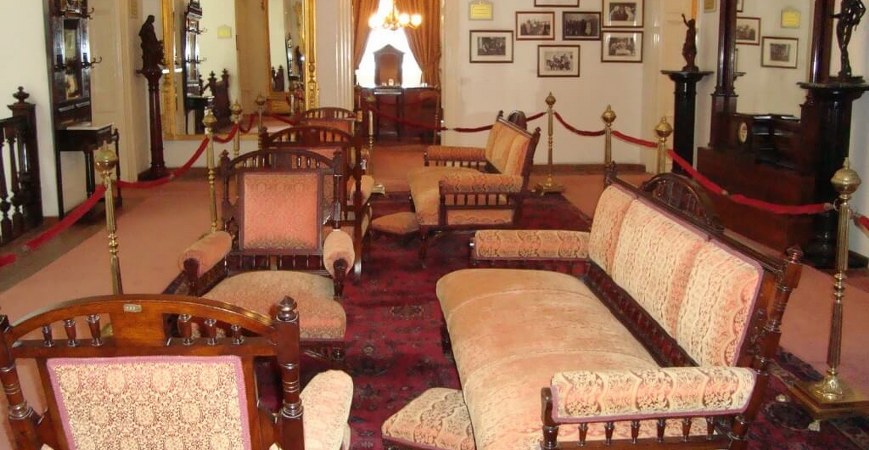Eskisehir Ataturk & Culture Museum and Yunus Emre Museum,
Eskisehir Ataturk and Culture Museum:
The building which originally housed the Appeal Court and Adalet Primary School in Eskisehir was turned into the Ataturk and Culture Museum in 1970.
The first section of the museum is reserved for objects concerning Ataturk, in order to keep alive the memory of the 116 occasions on which he visited Eskisehir from 1920 to 1938. In the Ataturk, the room is clothes worn by Ataturk, dinner services and walking sticks used by him, and photographs and documents recording his visits to Eskisehir. In the other two rooms are ethnographic works from the region of Eskisehir, including clothing, embroidery, ornaments, weapons etc.
Eskisehir Picture and Sculpture Gallery:
The Eskisehir Picture and Sculpture Gallery is housed in the soup kitchen building in the precincts of Kursunlu Mosque, which was built in the Ottoman period. In the gallery are permanent and temporary exhibitions of the pictures and sculpture of Turkish artists. The museum also conducts educational art studies.
Yunus Emre Museum:
The Yunus Emre Museum is situated in Yunus Emre village in the Eskisehir sub-province of Mihaliocilk. As well as the museum, which was opened in 1971, there is a mausoleum in memory of the great Turkish poet, Yunus Emre, in the village. The museum contains a collection of the poet’s lyric poems, his pictures, and documents and books about him. Seyitgazi
Seyitgazi Museum:
Seyitgazi Museum is situated in the soup kitchen and school in the Seyit Battalgazi, Kulliye in the Eskisehir sub-province of Seyitgazi, and was opened in 1970. The Sayid Banal Gazi Kulliye, which was built in the Seljuk period in memory of the legendary Turkish hero and bandit, Sayid Battal Gazi, was enlarged during the Ottoman period and is important as both a monument and museum. The museum contains both archaeological and ethnographic works found in the region of Seyitgazi, Among the archaeological works are dishes, clay sarcophagi and figurines, statues and busts, glass objects and building stones from the Phrygian and Roman period. Among the ethnographic works are embroidery, standards, objects used by dervishes, pieces of carpets and kilims, inscriptions, candlesticks, ornaments, dishes etc. from the Tomb of Sayid Battal Gazi and its precincts (kulliye).
Pessinus and Yazilikaya : There are two open air museum’s in the province of Eskisehir : One at the site of ‘Pessinus, a Phrygian city where the ruins of the Cybele Temple were found, and which is situated in the village of Balli’hisar 15 km south of Sivrihisar, and one at Yazilikaya, the site of remains of a Phrygian period city ‘known as the City of Midas, which is near Cifteler in Eskisehir province.


































































































































